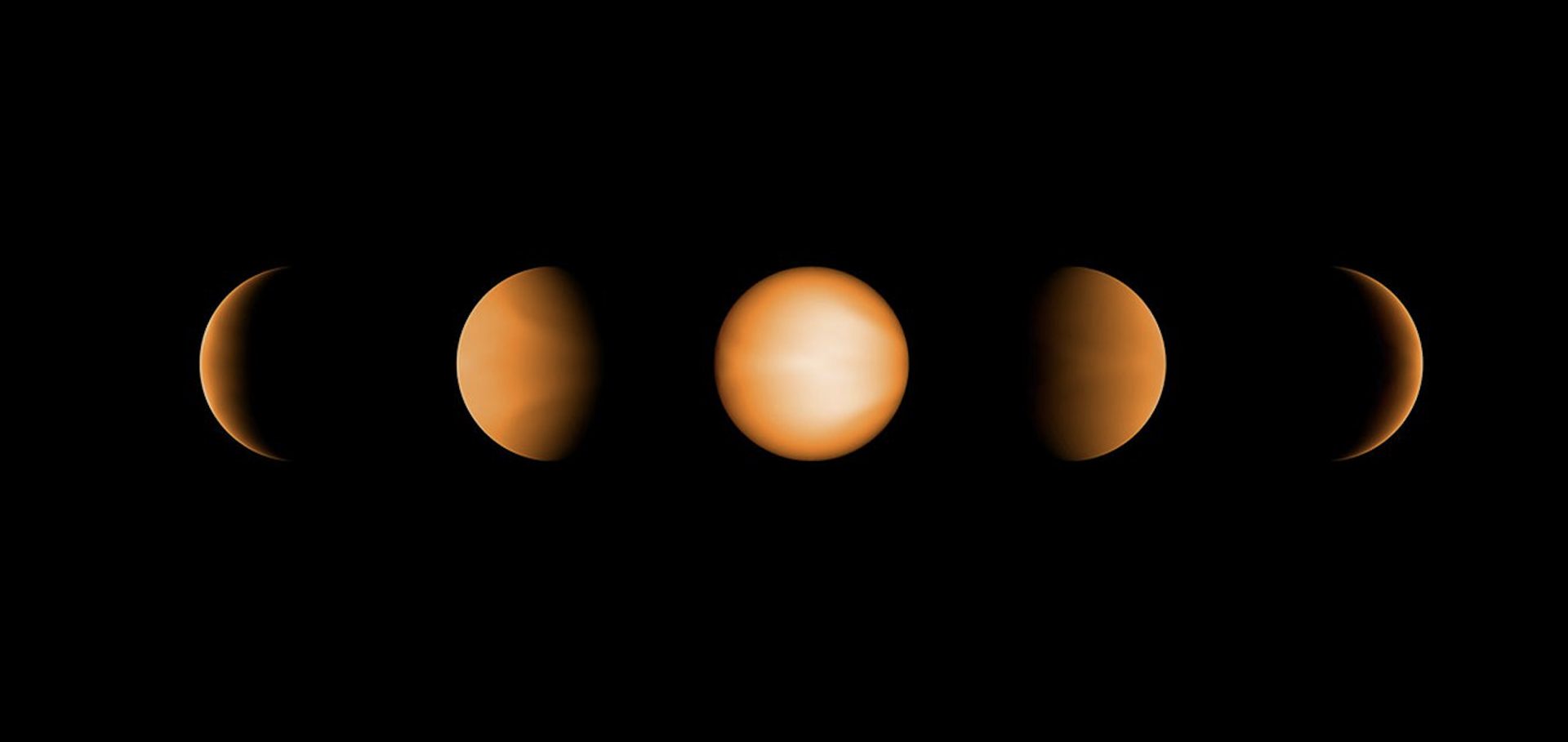All along the line of sight: a closer look at opening angles and absorption regions in the atmospheres of transiting exoplanets
Monthly Notices of the Royal Astronomical Society Oxford University Press (OUP) 510:1 (2021) 620-629
Mapping the pressure-dependent day-night temperature contrast of a strongly irradiated atmosphere with HST spectroscopic phase curve
Astronomical Journal IOP Publishing 163:1 (2021) 8
Abstract:
Many brown dwarfs are on ultrashort-period and tidally locked orbits around white dwarf hosts. Because of these small orbital separations, the brown dwarfs are irradiated at levels similar to hot Jupiters. Yet, they are easier to observe than hot Jupiters because white dwarfs are fainter than main-sequence stars at near-infrared wavelengths. Irradiated brown dwarfs are, therefore, ideal hot Jupiter analogs for studying the atmospheric response under strong irradiation and fast rotation. We present the 1.1–1.67 μm spectroscopic phase curve of the irradiated brown dwarf (SDSS1411-B) in the SDSS J141126.20 + 200911.1 brown dwarf–white dwarf binary with the near-infrared G141 grism of the Hubble Space Telescope Wide Field Camera 3. SDSS1411-B is a 50MJup brown dwarf with an irradiation temperature of 1300 K and has an orbital period of 2.02864 hr. Our best-fit model suggests a phase-curve amplitude of 1.4% and places an upper limit of 11° for the phase offset from the secondary eclipse. After fitting the white dwarf spectrum, we extract the phase-resolved brown dwarf emission spectra. We report a highly wavelength-dependent day–night spectral variation, with a water-band flux variation of about 360% ± 70% and a comparatively small J-band flux variation of 37% ± 2%. By combining the atmospheric modeling results and the day–night brightness temperature variations, we derive a pressure-dependent temperature contrast. We discuss the difference in the spectral features of SDSS1411-B and hot Jupiter WASP-43b, as well as the lower-than-predicted day–night temperature contrast of J4111-BD. Our study provides the high-precision observational constraints on the atmospheric structures of an irradiated brown dwarf at different orbital phases.Transit timings variations in the three-planet system: TOI-270
Monthly Notices of the Royal Astronomical Society Oxford University Press 510:4 (2021) 5464-5485
Abstract:
We present ground- and space-based photometric observations of TOI-270 (L231-32), a system of three transiting planets consisting of one super-Earth and two sub-Neptunes discovered by TESS around a bright (K-mag = 8.25) M3V dwarf. The planets orbit near low-order mean-motion resonances (5:3 and 2:1) and are thus expected to exhibit large transit timing variations (TTVs). Following an extensive observing campaign using eight different observatories between 2018 and 2020, we now report a clear detection of TTVs for planets c and d, with amplitudes of ∼10 min and a super-period of ∼3 yr, as well as significantly refined estimates of the radii and mean orbital periods of all three planets. Dynamical modelling of the TTVs alone puts strong constraints on the mass ratio of planets c and d and on their eccentricities. When incorporating recently published constraints from radial velocity observations, we obtain masses of Mb=1.48± 0.18, M⊕, Mc=6.20± 0.31, M⊕, and Md=4.20± 0.16, M⊕ for planets b, c, and d, respectively. We also detect small but significant eccentricities for all three planets: eb = 0.0167 ± 0.0084, ec = 0.0044 ± 0.0006, and ed = 0.0066 ± 0.0020. Our findings imply an Earth-like rocky composition for the inner planet, and Earth-like cores with an additional He/H2O atmosphere for the outer two. TOI-270 is now one of the best constrained systems of small transiting planets, and it remains an excellent target for atmospheric characterization.A unique hot Jupiter spectral sequence with evidence for compositional diversity
Nature Astronomy Springer Nature 5:12 (2021) 1224-1232
A solar C/O and sub-solar metallicity in a hot Jupiter atmosphere
Nature Springer Nature 598:7882 (2021) 580-584


